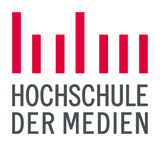119651a Mixed Reality Design
| Zuletzt geändert: | 23.07.2025 / Ghellal |
| EDV-Nr: | 119651a |
| Studiengänge: |
Mobile Medien (Bachelor, 7 Semester), Prüfungsleistung im Modul Mixed Reality Design
in Semester
4 6 7
Häufigkeit: S25 |
| Dozent: | Prof. Dr. Sabiha Ghellal |
| Sprache: | Deutsch |
| Art: | - |
| Umfang: | 4 SWS |
| ECTS-Punkte: | 6 |
| Workload: |
|
| Inhaltliche Verbindung zu anderen Lehrveranstaltungen im Modul: | It is recommended to take the course 3D Experience Design either prior to or alongside this seminar |
| Prüfungsform: | |
| Beschreibung: |
The module is structured in three interconnected phases, each with distinct learning goals: 1. Theoretical Foundations and Academic Discourse - Students explore key concepts such as presence, immersion, and interactivity. - The aim is to understand these principles and apply them as analytical and creative tools in the design process. Assignment 1: Analyze selected VR experiences (360° video and interactive applications) using theoretical design patterns. 2. Design and Development Skills - Students acquire hands-on experience using state-of-the-art Mixed Reality prototyping tools and hardware. - A strong emphasis is placed on applying theoretical insights from Phase 1. Assignment 2: Design and develop an original VR prototype – assessment focuses on creativity, design execution, technical implementation, and theoretical transfer from Assignment 1. 3. Reflection and Evaluation -Students learn to evaluate immersive experiences using research-based methods. - Evaluation strategies focus on measuring user experience in terms of presence, immersion, and interactivity. Assignment 3: Develop and implement an evaluation strategy, conduct user testing, and discuss results in a peer-reviewed group session. |
| English Abstract: | This seminar introduces students to the core scientific concepts essential for designing meaningful and engaging Mixed Reality (MR) experiences. Rather than focusing solely on technological innovation or visual fidelity, the course emphasizes the experiential dimensions that shape how users perceive, interact with, and feel within hybrid environments. The seminar is structured around five key principles: Virtual World – defines the content structure and rules of the experience Immersion – describes the depth of mental and physical absorption into the environment Presence – refers to the subjective feeling of “being there” in the virtual or mixed space Sensory Feedback – enables real-time system responses that create a sense of acknowledgement and connection Interactivity – allows users to actively influence and shape the experience Together, these five pillars form the foundation for creating intuitive, impactful, and human-centered MR environments. Students will explore these concepts through both theoretical discussion and practical application, gaining the skills to critically analyze and design immersive spatial experiences. |
| Literatur: |
Weitere Literatur finden Sie in der HdM-Bibliothek. |
| Internet: |
|
